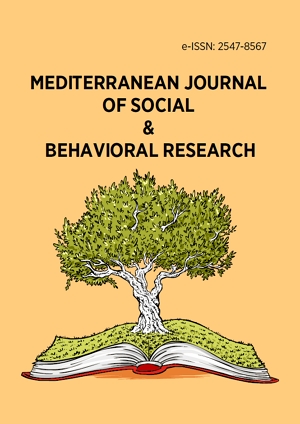Research Article
A Design for Graduate Students of Ceit Department Using Community of Practice Framework
More Detail
1 Middle East Technical University (METU), Ankara 06000, TURKEY* Corresponding Author
Mediterranean Journal of Social & Behavioral Research, 3(3), October 2019, 43-46, https://doi.org/10.30935/mjosbr/9593
Published: 01 December 2019
OPEN ACCESS 1307 Views 750 Downloads
ABSTRACT
Many of the faculty members in Turkey dedicate their working time on teaching, doing research, and counseling graduate students. Although teaching activities appear to be the main workload, conducting research seems to be the most important factor for academic promotions. Therefore, knowledge, skills and experience of faculty has a strong effect on higher education. On the other hand, most of the freshmen-graduate students in academic world don’t have experience design, run and report scientific research by making use of the existing literature, research design and methods.
This study focuses on the possibility for new learning environments where graduate students doing their Master of Science or Doctoral degrees could work as efficient as an experienced researcher. The graduate students in the Department of Instructional Technology at a public university in Ankara were observed to figure out the research requirements of young researchers. Community of Practice Theory (CoP) was used as a theoretical framework in doing a course design the requirement addressed in the analysis results. As a result, a new design based on the CoP was proposed, so as to increase the productivity in academic studies.
This study focuses on the possibility for new learning environments where graduate students doing their Master of Science or Doctoral degrees could work as efficient as an experienced researcher. The graduate students in the Department of Instructional Technology at a public university in Ankara were observed to figure out the research requirements of young researchers. Community of Practice Theory (CoP) was used as a theoretical framework in doing a course design the requirement addressed in the analysis results. As a result, a new design based on the CoP was proposed, so as to increase the productivity in academic studies.
CITATION (APA)
Polat, H., & Delialioğlu, Ö. (2019). A Design for Graduate Students of Ceit Department Using Community of Practice Framework. Mediterranean Journal of Social & Behavioral Research, 3(3), 43-46. https://doi.org/10.30935/mjosbr/9593
REFERENCES
- Bandura, A. (1986). Social foundations of thought and action: A social cognitive theory. Englewood Cliffs, NJ: Prentice Hall.
- Cambridge, D., Kaplan, S., & Suter, V. (2005). Community of Practice Design Guide: A Step-by-Step Guide for Designing & Cultivating Communities of Practice in Higher Education.
- Ferdinand Tönnies (ed. Jose Harris) (2001). Community and Civil Society. Cambridge University Press.
- Guerin, C., Xafis, V., Doda, D. V., Gillam, M. H., Larg, A. J., Luckner, H., Jahan, N., Widayati, A., & Xu, C. (2013). Diversity in collaborative research communities: a multicultural, multidisciplinary thesis writing group in public health. Studies in Continuing Education, 35(1), 37–41. https://doi.org/10.1080/0158037X.2012.684375
- Li, L. Y., & Vandermensbrugghe, J. (2011). Supporting the thesis writing process of international research students through an ongoing writing group. Innovations in Educational and Teaching International, 48(2), 195–205. https://doi.org/10.1080/14703297.2011.564014
- Salas-Lopez, D., Deitrick, L., Mahady, E. T., Moser, K., Gertner, E. J., & Sabino, J. N. (2012). Getting Published in an Academic-Community Hospital: The Success of Writing Groups. Journal of General Internal Medicine, 27, 113-116. https://doi.org/10.1007/s11606-011-1872-9
- Wenger, E., McDermott, R. A., & Snyder, W. (2002). Cultivating communities of practice: A guide to managing knowledge. Harvard Business Press.
- Wenger, E. (1998). Communities of practice: Learning, meaning, and identity. Cambridge University Press. https://doi.org/10.1017/CBO9780511803932

 The articles published in this journal are licensed under the CC-BY Creative Commons Attribution International License.
The articles published in this journal are licensed under the CC-BY Creative Commons Attribution International License.